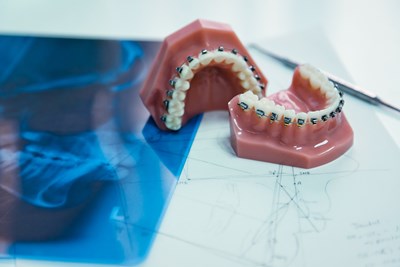Periodontal disease is an infection of the gums surrounding the teeth. In its beginning stage, known as gingivitis, appropriate treatment can reverse damage and stop progression. Eventually, gingivitis can turn into a more advanced stage of periodontal disease, called periodontitis.
While appropriate daily oral care can prevent periodontal disease, other risk factors can still play a role in its development. Knowing what to look for can help you discover gum damage early enough to fix the problem before it takes over your mouth. Here is a look at the signs of periodontal disease.
Signs of Gingivitis
While regular visits to the dentist can help keep your teeth and gums healthy, not everyone makes it in for an annual check up. If you fall into this category, it’s especially important to pay attention on your own. While beginning periodontal disease doesn’t usually cause pain, it can be visibly evident.
Essentially, the bacteria, mucus, and other particles in the mouth form a plaque on the teeth. While most of it comes off when you brush or floss, not all of it will—particularly where tooth meets gum. The bacteria causes infection in the gums; the gums become red and swollen from toxins produced by the infection. This causes an irritation, which makes the gums more likely to bleed during brushing or flossing. While some people think this is normal, it’s actually a sign of periodontal disease.
Signs of Periodontitis
If steps aren’t taken to clear up gingivitis, the bacteria will persist and make matters even worse. The plaque can spread further down the tooth past the gum line. At this point, the irritating toxins actually cause the body to turn on itself and start destroying the gums and teeth. Swelling and redness grow worse, with the gums even turning a dark purple.
You may notice that your breath smells bad or that you have a gross taste in your mouth frequently. The gums can become painful to the touch, while teeth start to grow loose. Your teeth may appear to grow taller, because the gums can pull away from the teeth and recede. As the disease progresses, you may even notice pus in your mouth. Eventually you may notice a change in your bite or the way dentures fit on your gums.
Signs of Periodontal Pockets
Periodontal pockets may form, especially when chronic periodontitis is present. The space created by loosened teeth and receding gums, combined with the inflammation and toxins produced by infection are a recipe for disaster. The pockets that form create the perfect spot for even more infection and plaque to develop—which, unfortunately, only makes the situation worse.
The pockets slowly get bigger and deeper, making it easier to access and destroy the jaw bone. You may lose teeth as the bone in the gums is destroyed. If you notice spaces developing in between your teeth, or any of the other signs of periodontal disease, set up an appointment with your dentist right away—the sooner your teeth are professionally cleaned and proper treatments are begun, the better the chances of saving your teeth.



